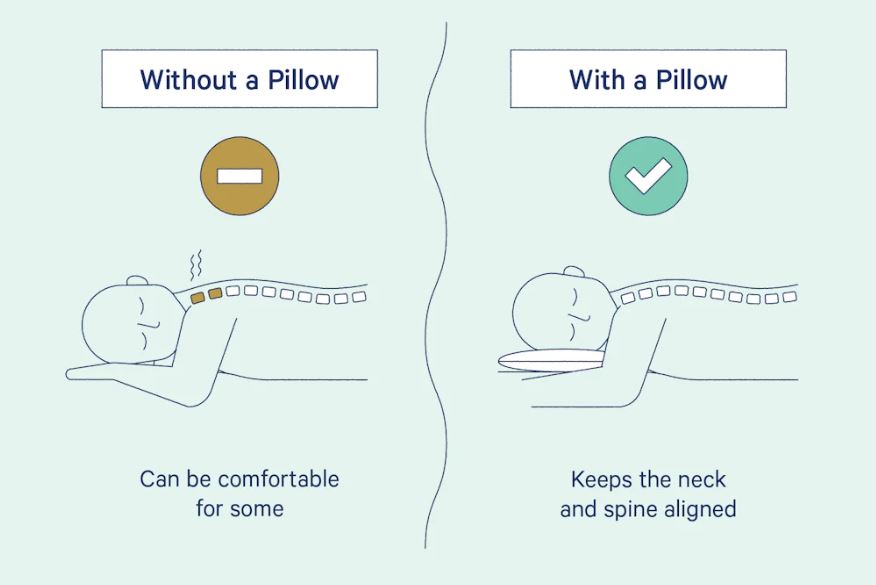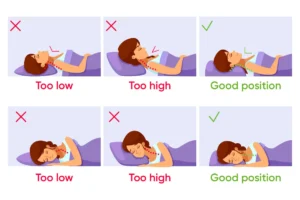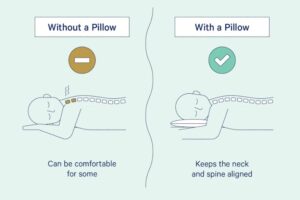Your body structure and sleeping habits determine if you should sleep with or without a pillow. Back and side sleepers feel more comfortable with a pillow.
Stomach sleepers can sleep without a pillow. A thin or no pillow is more comfortable for stomach sleepers.
The idea here is to achieve spinal alignment and feel comfortable while sleeping. You can sleep with a pillow or without a pillow as per your own desire.
Comfort is personal, but spinal health is universal. Whether sleeping with or without a pillow is good for you must be decided by analyzing the best position for spinal alignment.
Importance of a Pillow in Sleep Quality
Pillows aren’t just for comfort; they’re designed to support the natural curve of your neck and spine.
A good pillow keeps your head, neck, and spine in neutral alignment, reducing pressure and preventing strain.
However, whether a pillow helps or hurts you depends largely on how you sleep.

Sleeping with or without a Pillow
Sleeping without a pillow can change your life if you wake up tired and with muscle pain. But deciding whether you should sleep with or without is a complicated process.
There are several factors that you need to consider. This guide will discuss important details that you need to know about:
- Benefits and risks of sleeping with a pillow
- Benefits and risks of sleeping without a pillow
- Who should use a pillow and who shouldn’t?
Option 1: Sleeping with a Pillow
Sleeping with a pillow is common practice for most people, and for good reasons. The primary purpose of a pillow is to keep your head and neck in a neutral alignment with the rest of your spine.
This helps prevent kinks, aches, and stiffness in the neck and shoulders.
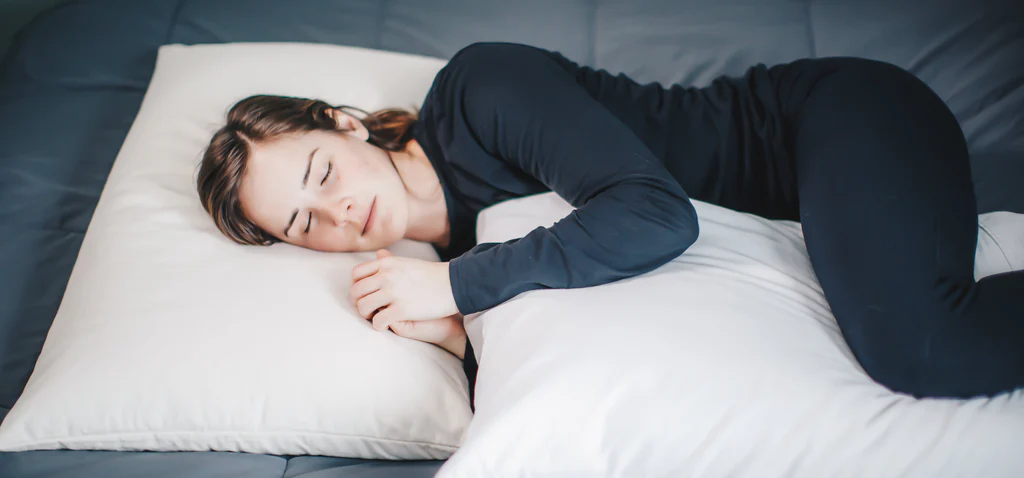
Benefits of Sleeping with a Pillow
Sleeping with a pillow is generally recommended and beneficial for maintaining good spinal alignment and comfort during sleep.
The key is finding the right pillow that suits your unique sleep habits. Here are some benefits of sleeping with a pillow.
1. Maintains Spinal Alignment (For Most Positions)
For side and back sleepers, a pillow helps keep the spine aligned by filling the gap between the head and the mattress. This prevents neck flexion or extension that can lead to discomfort.
2. Reduces Pressure on Joints
Using a pillow can prevent shoulder, neck, or lower back pain by distributing body weight evenly and reducing pressure points.
3. Promotes Better Breathing
Elevating the head slightly with a pillow can open up airways, making breathing easier and potentially reducing snoring or sleep apnea symptoms.
4. Custom Support Options
Modern pillows come with a variety of options, including orthopedic, memory foam, contour, and adjustable height. These pillows offer tailored support based on body type and sleep preference.
Disadvantages of Sleeping with a Pillow
The wrong pillow can cause more damage than good. Here are some possible disadvantages that you might experience while sleeping on a bad pillow.
1. Wrong Pillow = Neck Pain
Using a pillow that’s too thick or too thin can misalign the spine, causing stiffness, headaches, or pain upon waking.
2. Allergens and Heat Retention
Pillows can accumulate dust mites, sweat, and allergens. Some materials may also trap heat, affecting sleep quality.
When might someone not sleep with a pillow?
Here are some situations where even a normal person may want to avoid sleeping with a pillow.
- Infants: For safety reasons to prevent SIDS (Sudden Infant Death Syndrome), infants should not sleep with pillows.
- Some Stomach Sleepers: As mentioned, some stomach sleepers find it more comfortable and better for their neck to sleep without a pillow or with a very thin one.
- Individuals with Specific Medical Conditions: In rare cases, a doctor might advise against using a pillow for certain neck or spinal conditions.
Option 2: Sleeping without a Pillow
Not everyone finds fluffy and bulky pillows comfortable. Sometimes, sleeping without a pillow feels more comfortable. Usually, stomach sleepers like to sleep without a pillow.
Should you sleep without a pillow? We need to analyze the pros and cons of sleeping without a pillow to answer this question.
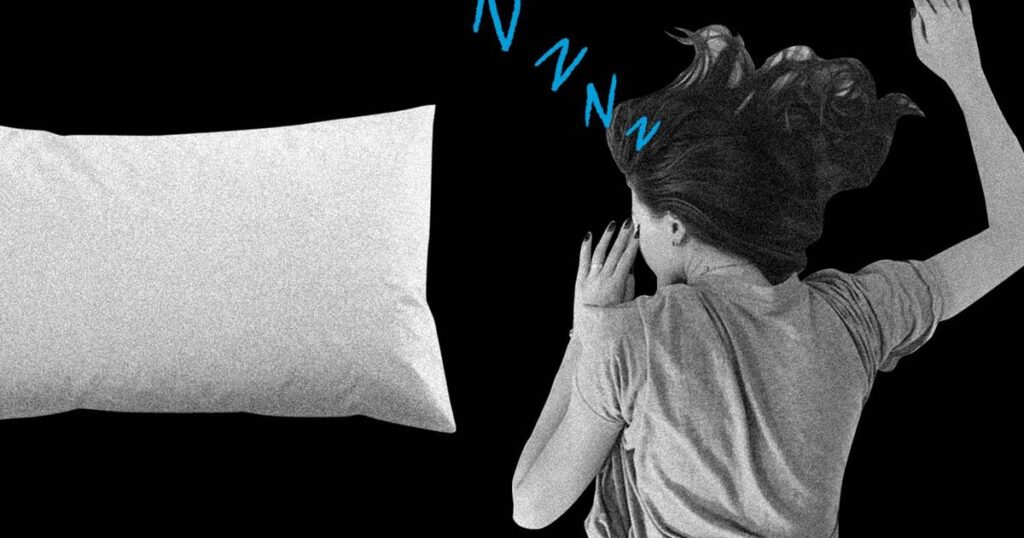
Pros of Sleeping without a Pillow
Before throwing out your pillow, keep reading this article till the end. After explaining benefits of sleeping without a pillow, we will analyze potential disadvantages too.
First, here are the benefits of sleeping without a pillow.
1. Promotes Natural Alignment for Stomach Sleepers
If you sleep on your stomach, skipping the pillow can help avoid awkward neck angles that lead to strain or discomfort.
2. May Reduce Wrinkles and Acne
Without a pillow pressing against your face, skin irritation, oil transfer, and wrinkle formation may be lessened over time.
3. Encourages a Neutral Posture (For Some)
Sleeping without a pillow may encourage a flatter, more neutral alignment of the spine, but only in specific positions like stomach sleeping.
Cons of Sleeping without a Pillow
Now, sleeping without a pillow is not for everyone. Here are some potential challenges that you might face while sleeping without a pillow.
1. Risk of Neck Strain (Especially for Side/Back Sleepers)
Without any elevation or support, side and back sleepers often experience an unnatural bend in the neck, leading to pain and poor posture.
2. Not Ideal for People with Snoring or Sleep Apnea
Sleeping flat can cause the tongue and soft tissues to obstruct airways, making it harder to breathe and worsening sleep apnea symptoms.
3. Can Exacerbate Existing Back or Shoulder Issues
If you already suffer from musculoskeletal discomfort, sleeping without a pillow may worsen your symptoms rather than relieve them.
What Science and Sleep Experts Recommend
According to chiropractors and sleep researchers, the best pillow choice depends on your sleeping position:
| Sleeping Position | Recommended Pillow Use | Ideal Pillow Type |
| Back | Yes | Medium-loft pillow that supports the neck curve |
| Side | Yes | A firm, high-loft pillow to fill the shoulder gap |
| Stomach | Optional (or No Pillow) | Thin, soft pillow or none |
Who Should Consider Ditching the Pillow?
Stomach sleepers often twist their necks awkwardly.
- People with certain types of acne or skin sensitivity.
- Those experimenting with minimalist sleep setups or seeking posture correction naturally.
However, make the transition gradually. Start by using a thinner pillow or only removing it for part of the night.
How to Choose the Right Pillow?
The right pillow can make or break your sleep quality. A pillow that’s too soft, too firm, too thick, or too thin can lead to neck pain, stiffness, headaches, or restless nights.
But choosing the perfect pillow isn’t one-size-fits-all—it depends on your sleeping position, body type, and personal preferences.
Here’s a detailed guide to help you choose the right pillow for healthier, more comfortable sleep.

1. Determine Your Sleeping Position
Your primary sleep position plays a huge role in the type of pillow you need.
Side Sleepers
- Need: A thick, firm pillow to fill the space between your head and shoulder.
- Why: Keeps your neck aligned with your spine.
- Best options: Memory foam, contour, or latex pillows with medium to high loft.
Back Sleepers
- Need: A medium-loft pillow that cradles the head while supporting the neck.
- Why: Prevents your head from tilting too far forward or backward.
- Best options: Cervical pillows, memory foam, or feather pillows.
Stomach Sleepers
- Need: A very soft, low-loft pillow—or no pillow at all.
- Why: Minimizes neck twisting and keeps the spine neutral.
- Best options: Down pillows, thin memory foam, or skipping the pillow.
2. Understand Pillow Loft
Loft refers to the height or thickness of the pillow.
| Loft Type | Best For | Spinal Effect |
| Low Loft | Stomach sleepers | Keeps the head from tilting upwards |
| Medium Loft | Back sleepers | Supports the neck without raising the head too much |
| High Loft | Side sleepers | Fills the gap between the head and the shoulder |
3. Consider Pillow Fill Materials
Different fillings offer different levels of support, firmness, cooling, and longevity.
Memory Foam
- Molds to the shape of your head and neck.
- Great for pressure relief and spinal alignment.
- May retain heat (look for gel-infused or ventilated designs).
Down/Feather
- Soft and fluffy, adjustable loft.
- Lightweight and breathable.
- Less support than foam—better for stomach sleepers.
Latex
- Naturally hypoallergenic and bouncy.
- Cooler and more durable than memory foam.
- Offers firm, consistent support.
Polyfill (Synthetic Fiber)
- Affordable and widely available.
- Lightweight and washable.
- Shorter lifespan and may flatten over time.
Buckwheat or Organic Fillings
- Eco-friendly and adjustable.
- Firm and supportive, but can be noisy and heavy.
4. Check for Temperature Regulation
If you’re a hot sleeper, look for pillows with:
- Cooling gel-infused memory foam
- Breathable covers (e.g., bamboo, cotton)
- Ventilated or shredded foam cores
5. Look for Maintenance and Hygiene Features
- A machine-washable cover is essential for hygiene.
- Dust mite resistance helps if you have allergies.
- Zippered or adjustable fill pillows let you control loft.
6. Consider Special Needs
- Neck pain or cervical issues? Choose an orthopedic or cervical pillow.
- Snoring or sleep apnea? Try an elevated wedge or contour pillow.
- Pregnant or side sleepers needing extra support? A body pillow can help align the hips and spine.
7. Try Before You Buy (If Possible)
Some pillow brands offer trial periods or satisfaction guarantees. Don’t hesitate to return or exchange if it doesn’t feel right after a few nights.
Summary Table: Choosing the Right Pillow
| Factor | What to Look For |
| Sleeping Position | Side = High loft; Back = Medium loft; Stomach = Low loft |
| Fill Material | Memory foam (supportive), Down (soft), Latex (firm/cool) |
| Firmness | Side = Firm, Back = Medium, Stomach = Soft |
| Allergies | Hypoallergenic materials like latex or microfiber |
| Hot Sleeper | Cooling gels, breathable covers, and latex |
| Neck/Spine Issues | Orthopedic or contour pillows |
| Budget | Polyfill for budget, latex, or memory foam for durability |
Tips for Starting to Sleep without a Pillow
Sleeping without a pillow can offer benefits like improved spinal alignment for some stomach sleepers, reduced neck strain, and even fewer facial wrinkles.
But going cold turkey might leave you stiff or uncomfortable. If you’re considering ditching the pillow, it’s important to do it gradually and mindfully.
Here are practical tips to help you transition smoothly.
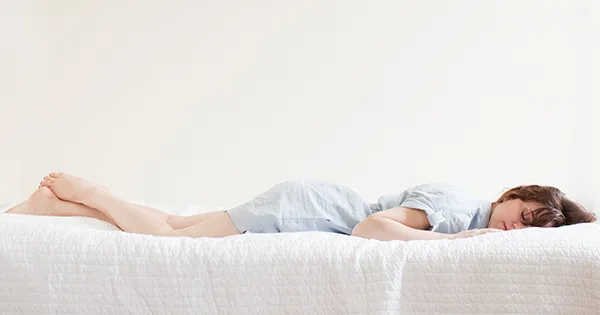
1. Understand If It’s Right for You
Sleeping without a pillow isn’t for everyone. It works best if:
- You sleep on your stomach (helps reduce neck strain).
- You suffer from certain types of neck or upper back tension due to overly high pillows.
- You’re interested in minimalist or natural sleep postures.
Side and back sleepers usually need some support to keep the neck aligned, so for them, skipping the pillow is generally not recommended.
2. Start by Lowering Your Pillow Height
Instead of removing your pillow right away:
- Use a thinner pillow or a folded towel.
- Gradually reduce the height over several nights or weeks.
- Let your body adjust to the new angle at a slow pace.
This minimizes shock to your neck and spine.
3. Use a Rolled Towel for Neck Support (If needed)
As you remove the pillow, your neck might still need a little support, especially if you’re a back sleeper.
- Roll a small towel and place it under your neck, not your head.
- This supports the natural cervical curve without elevating your head too much.
4. Do Gentle Neck and Spine Stretches Before Bed
Preparing your body helps reduce stiffness and improve alignment.
- Try light neck rolls, shoulder shrugs, or yoga stretches like child’s pose or cat-cow.
- These loosened muscles make it easier to adjust to a new sleeping posture.
5. Evaluate Your Mattress Surface
A firm or supportive mattress helps compensate for the lack of a pillow.
- If your mattress is too soft, your body may sink unevenly, causing misalignment.
- Aim for a medium-firm surface that keeps your spine flat and evenly supported.
6. Be Patient and Give Your Body Time
You may feel sore or awkward for the first few nights. That’s normal.
- Stick with it for a week or two before making a final decision.
- If discomfort persists or worsens, consider returning to a low-loft pillow instead of eliminating it entirely.
7. Listen to Your Body
The goal is comfort and alignment. If you wake up feeling worse without a pillow—especially with headaches, shoulder pain, or a stiff neck—it may not be the right move for you.
Bonus Tip: Try It During Naps First
- Test pillow-free sleep during short naps to get used to the sensation.
- This lets your body adapt in low-stakes settings before overnight transitions.
Final Thoughts: Personal Comfort vs. Spinal Health
There is no one-size-fits-all answer. The choice to sleep with or without a pillow depends on your sleeping position, body type, and existing health conditions. In general:
- Side and back sleepers should use a pillow to avoid spinal misalignment.
- Stomach sleepers may benefit from skipping the pillow to reduce neck strain.
When in doubt, try different pillow heights and observe how your body feels in the morning. The goal is always to support your spine, ease pressure, and improve your sleep quality.

